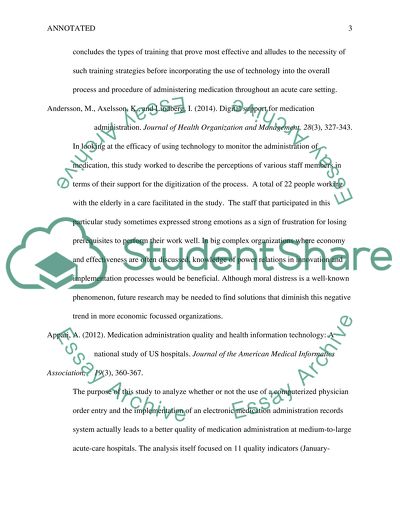Cite this document
(“Technology in Nursing Impacting Medication Administration Annotated Bibliography”, n.d.)
Technology in Nursing Impacting Medication Administration Annotated Bibliography. Retrieved from https://studentshare.org/nursing/1691573-technology-in-nursing-impacting-medication-administration
Technology in Nursing Impacting Medication Administration Annotated Bibliography. Retrieved from https://studentshare.org/nursing/1691573-technology-in-nursing-impacting-medication-administration
(Technology in Nursing Impacting Medication Administration Annotated Bibliography)
Technology in Nursing Impacting Medication Administration Annotated Bibliography. https://studentshare.org/nursing/1691573-technology-in-nursing-impacting-medication-administration.
Technology in Nursing Impacting Medication Administration Annotated Bibliography. https://studentshare.org/nursing/1691573-technology-in-nursing-impacting-medication-administration.
“Technology in Nursing Impacting Medication Administration Annotated Bibliography”, n.d. https://studentshare.org/nursing/1691573-technology-in-nursing-impacting-medication-administration.


